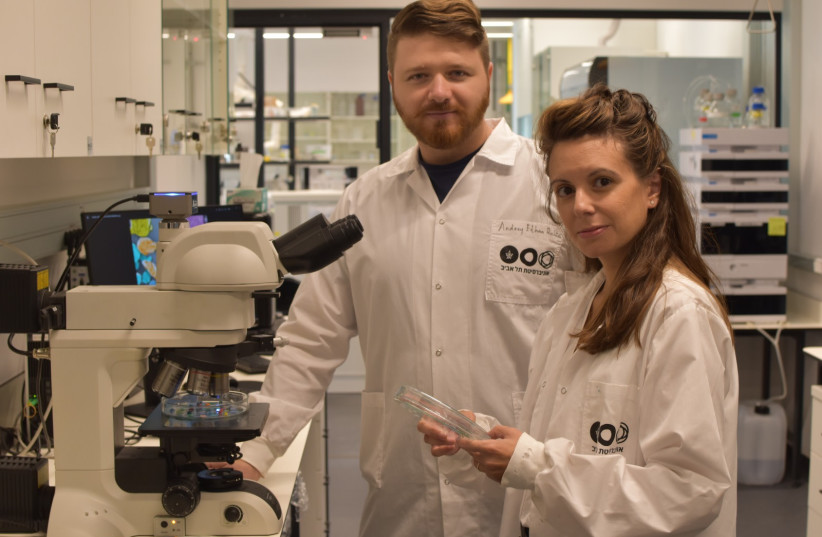Israel’s coastline is contaminated with over two tons of microplastics that are dangerous to the environment and to health, a new study at Tel Aviv University (TAU) shows.
The sources of plastic pollution found include food packaging, single-use plastic products and fishing nets. The most polluted Israeli beaches are in Tel Aviv and Hadera. The researchers warned that given the current situation in Israel, public exposure to microplastic waste is “inevitable.”
The study was led by doctoral student Andrey Ethan Rubin and master’s student Limor Omeysi from the lab of Dr. Ines Zucker of TAU’s Fleischman Faculty of Engineering and the Porter School of the Environment and Earth Sciences.
It has just been published in the scientific journal Marine Pollution Bulletin under the title “Mediterranean microplastic contamination: Israel’s coastline contributions.”
Microplastics in Israel
The study, conducted in collaboration with the Mediterranean Sea Research Center of Israel, sent researchers to the beaches to collect sand samples from six beaches from Haifa to Ashkelon.
Examining them under microscopes, they found the microplastic fragments and biofilms covered with organic and inorganic substances were the predominant onshore contaminants and that polyethylene and polypropylene were the most abundant types on the shores.

The research findings show that the beaches of Tel Aviv and Hadera were the most polluted of the beaches tested. The level of contamination on these beaches was four times higher than that of Rishon Lezion Beach and Dor Beach, which were the two beaches with the lowest concentration of microplastic particles. Still, even in the Dor Beach Nature Reserve, which is cleaned frequently, a considerable amount of microplastic particles was found.
The Environmental Protection Ministry recently launched a public-service campaign urging people to bring multiple-use plates, cups and cutlery with them to the beach, nature reserves and parks and to take them home.
Sites located close to the mouths of streams, where the tide meets them, showed elevated contamination levels. Tel Aviv and Hadera, which are both located near stream estuaries, were highly contaminated (18,777 particles per cubic meter) with microplastics compared to the other locations. The stream’s waters carry microplastic particles with them into the sea, thereby intensifying the level of contamination on the beach.
The detritus included both secondary microplastics and pristine pellets of polymers including polyurethane, polypropylene, PVC foams and Styrofoam.
Rubin explained that over the course of the past year, the researchers collected samples from six areas along the coast – Ashkelon, Rishon Lezion, Tel Aviv, Hadera, Dor Beach and Haifa.
The samples were then taken to the laboratory where various analyses were performed, including particle count, mass measurements, image analysis and chemical analysis to identify the polymer the plastic was made up of, as well as the elements adsorbed onto the microplastic particles.
“It was interesting to see that plastics such as food packaging were more dominant than plastics of marine origin such as fishing nets.”
Andrey Ethan Rubin
“It was interesting to see that plastics such as food packaging were more dominant than plastics of marine origin such as fishing nets,” added Rubin. “This indicates a need for better regulation of coastal waste.”
For example, the researchers say that Nahal Alexander collects leachate from untreated sewage from the West Bank, as well as waste from agricultural and industrial areas located near the riverbeds. Similarly, microplastics accumulate at the Yarkon River from the industrial centers in Tel Aviv.
“Our research reveals that the Israeli coastline likely contains over two tons of microplastic waste,” says Rubin. “Environmental conditions slowly break this plastic down into even smaller particles. The smaller the plastic particles, the harder it is to remove them from the environment and the more dangerous they are to the environment and to our health. The microplastic particles that drift into the sea are swallowed by fish, and their remains eventually reach humans who eat the fish.”
“Our microplastic studies reveal the current state of microplastic pollution along Israel’s Mediterranean coast and provide knowledge on the effects of the presence of microplastics in the environment,” concluded Zucker. “Plastic monitoring research in Israel is still lacking, and we must monitor the smaller plastic particles and additional environmental samples, such as sea water and streams to better understand environmental patterns with regards to the presence of microplastics. This way or another, it would appear that exposure to microplastic waste is inevitable. We are working on assessing the environmental and health impacts that may arise given the prevalence and high concentrations of the particles that we found. In a practical perspective, regulatory steps are required in order to reduce Israel’s contribution to microplastic pollution in the Mediterranean.”
